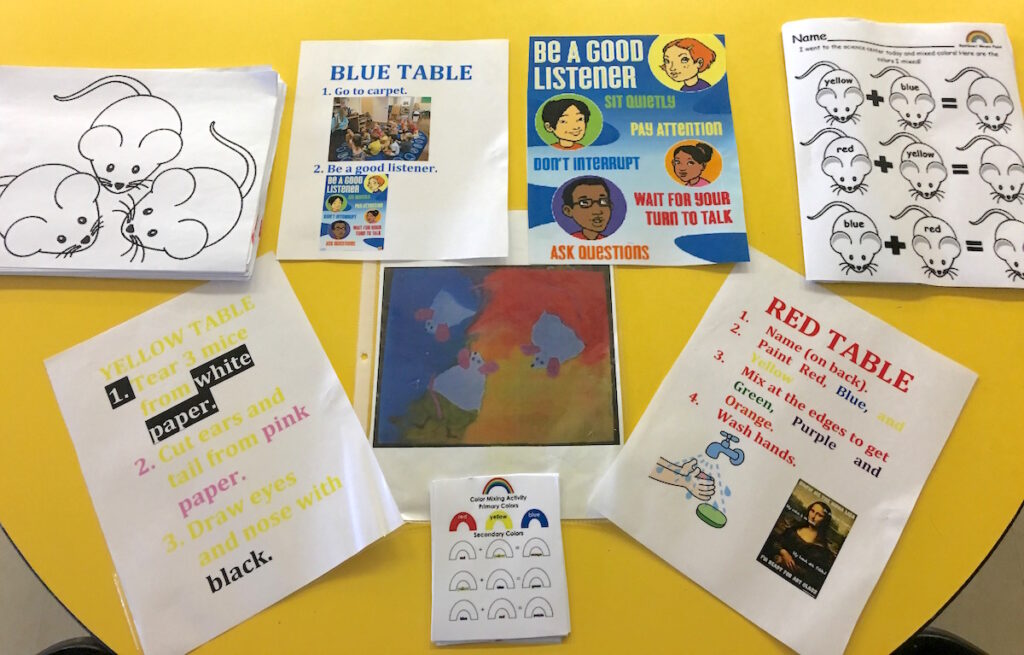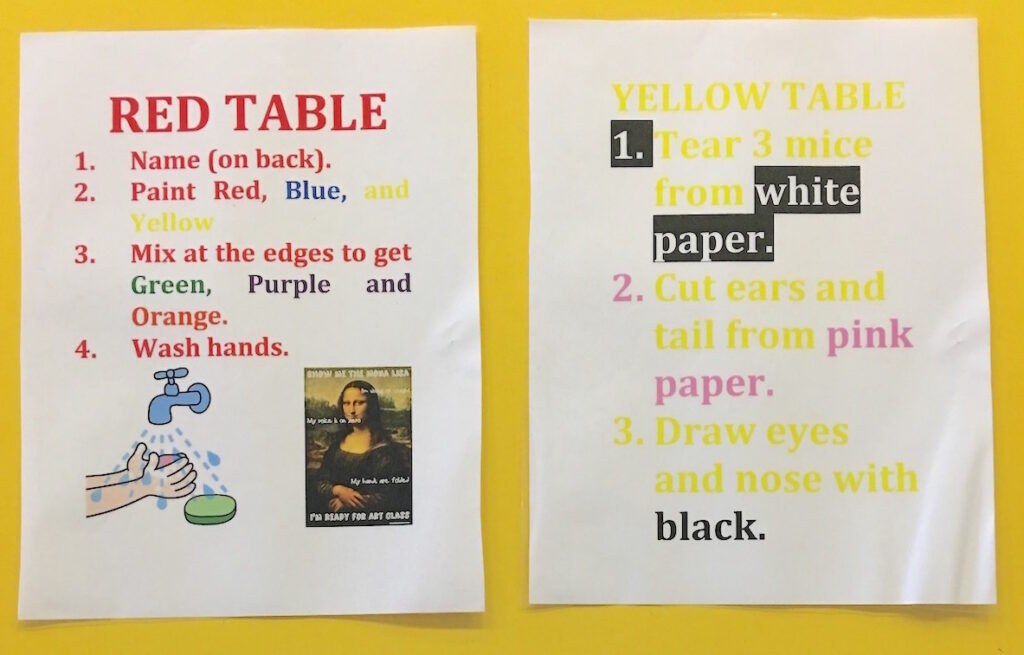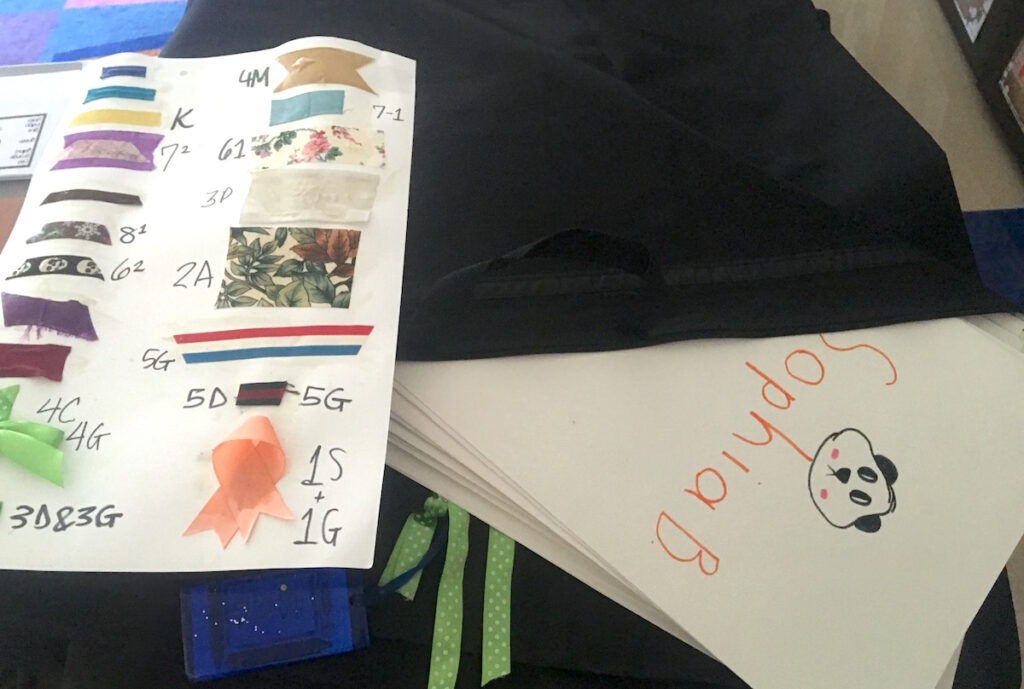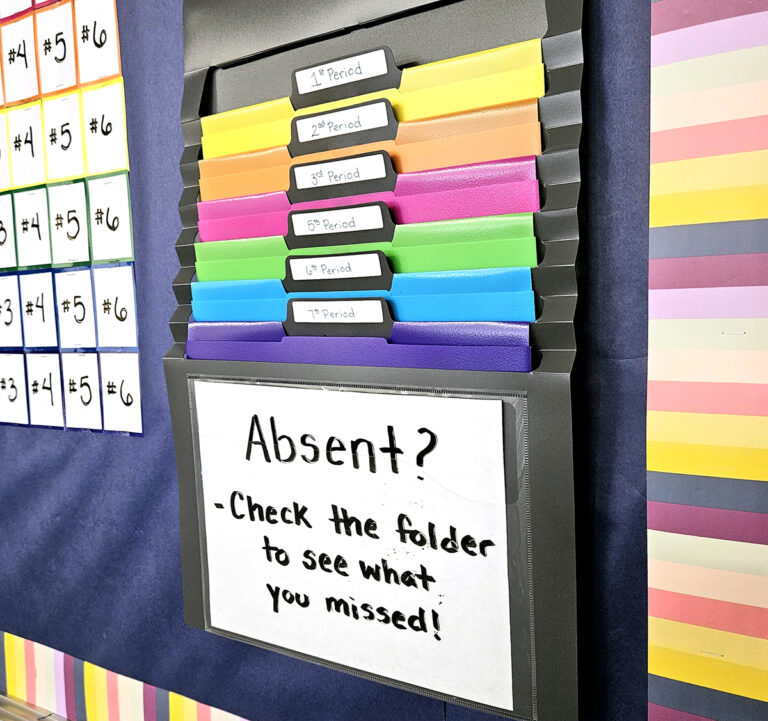Large classes pose special challenges in the art room. When you see a class list that includes 30, 35, or even 40 kids, your mind starts racing.
- Do I have enough scissors?
- How will forty kindergartners ever wash their hands in a timely manner?
- How on earth will I store all these projects?
I’m here to tell you, I’ve been there–sometimes with 42 kindergartners at once. It’s not easy, but it’s doable with a few tricks up your sleeve.
Here are the 7 ways I make it work.

1. Stagger Project Steps
Instead of having everyone use the same materials at the same time, break students into two groups. For example, if a project has a collage step and a watercolor step, set up two different stations with the necessary supplies for each. Have one group work on the collage step and the other work on the watercolor step. The next time you see them, have the students switch. This strategy can work with any number of projects and materials.
2. Assign Collaborative Work
Create small groups of 2-4 students and let them create collaboratively when possible. You will have fewer projects to store, grade, and hang. Plus, students will learn how to create as a team. Murals and other large-scale projects are a great way to keep all those hands in the mix.
3. Set Clear Expectations for Aides and Volunteers
In large classes, aides are indispensable. Make sure you’ve communicated to your aides exactly how they can best be of service. Other adults in the room are only helpful if they know what you expect of them. Be sure they also know how grateful you are to have them. Aides and volunteers who feel appreciated will give you more.
4. Assign Students Specific Jobs

Assigning students specific jobs makes transitions easier in large groups. If one group knows they are washing tables while another is going to collect work, cleanup will be smoother. It’s paramount to create a system where expectations are clear for students.
5. Find a Way to Have Students’ Names Visible During Class
It is hard to make personal connections when you have hundreds of students. Remembering everyone’s name becomes a formidable challenge. If a folder with the student’s name on it is in front of them during the class period, you won’t have to guess their name. These folders also allow you to make quick seating arrangement changes by simply moving them around.
6. Create Class Portfolios

Individual student folders can then be kept in large class portfolios. I like to identify each class with their own special ribbon. It makes finding their portfolio fast and easy for me and for student helpers! Class portfolios also expedite setup and cleanup for large classes.
7. Have a Concrete Plan for Students Presenting Behavior Challenges
One out of order student can quickly start a riot in a large group. One way to deal with this is to partner with a nearby classroom teacher. If a disruptive student needs a break, I send them to the other teacher to sit quietly in that classroom until they feel they can return and try again. Often a change of scenery for a few minutes is all it takes.
The next time you find you’ve been handed a class that is larger than you think you can handle, think again! You can do it!
What is your largest class size?
What tips and/or tricks do you have for working with large groups?
Magazine articles and podcasts are opinions of professional education contributors and do not necessarily represent the position of the Art of Education University (AOEU) or its academic offerings. Contributors use terms in the way they are most often talked about in the scope of their educational experiences.





